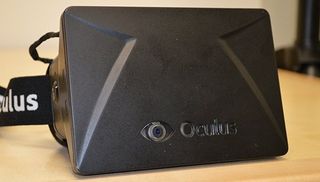Oculus Rift creator says game speed is key to solving motion sickness in VR

How real is real anyway? Oculus Rift creator Palmer Luckey thinks the best solution to motion sickness problems when using a virtual reality headset might be rethinking how movement is simulated in all games, not just those that plan on exploiting the new technology.
"The run speed in Unreal Tournament 3 is something like 30 miles an hour," Luckey said in an interview with TechRadar . "And instant acceleration backward 40 miles an hour... the human body does not handle it well. So a lot of this work that has to be done to make games work in VR is really making games that won't make people sick in reality while still keeping the limitations of VR in mind."
Luckey said there are already some test builds of the headset "that for some content completely eliminate motion sickness," while other people simply take time to adapt to the device. Since some of the most intriguing uses for a VR headset would be all about manipulating tremendous speeds, it seems key that designers behind hardware like the Oculus Rift as well as those behind upcoming games like EVE: Valkyrie uncover the perfect balance of immersion and comfort.
It's clear that the constant testing and refinement of such a bleeding edge piece of technology goes hand in hand with developing for the PC. We've been following the steady progress and regular upgrades to the VR technology, both in screen resolution and in controlling motion sickness , for most of 2013 already. It's a dynamic of constant change that will likely see the Rift remain a PC peripheral, even as new console platforms are currently being introduced. Luckey argues that "consoles are too limited for what we want to do."
"We're trying to make the best virtual reality device in the world and we want to continue to innovate and upgrade every year—continue making progress internally—and whenever we make big jumps we want to push that to the public," he said.
"The problem with consoles in general is that once they come out they're locked to a certain spec for a long, long time," Luckey said. "Look at the PCs that existed eight years ago. There have been so many huge advances since then. Now look at the VR hardware of today. I think the jump we're going to see in the next four or five years is going to be massive, and already VR is a very intensive thing, it requires rendering at high resolutions at over 60 frames a second in 3D."
The biggest gaming news, reviews and hardware deals
Keep up to date with the most important stories and the best deals, as picked by the PC Gamer team.
Most Popular






